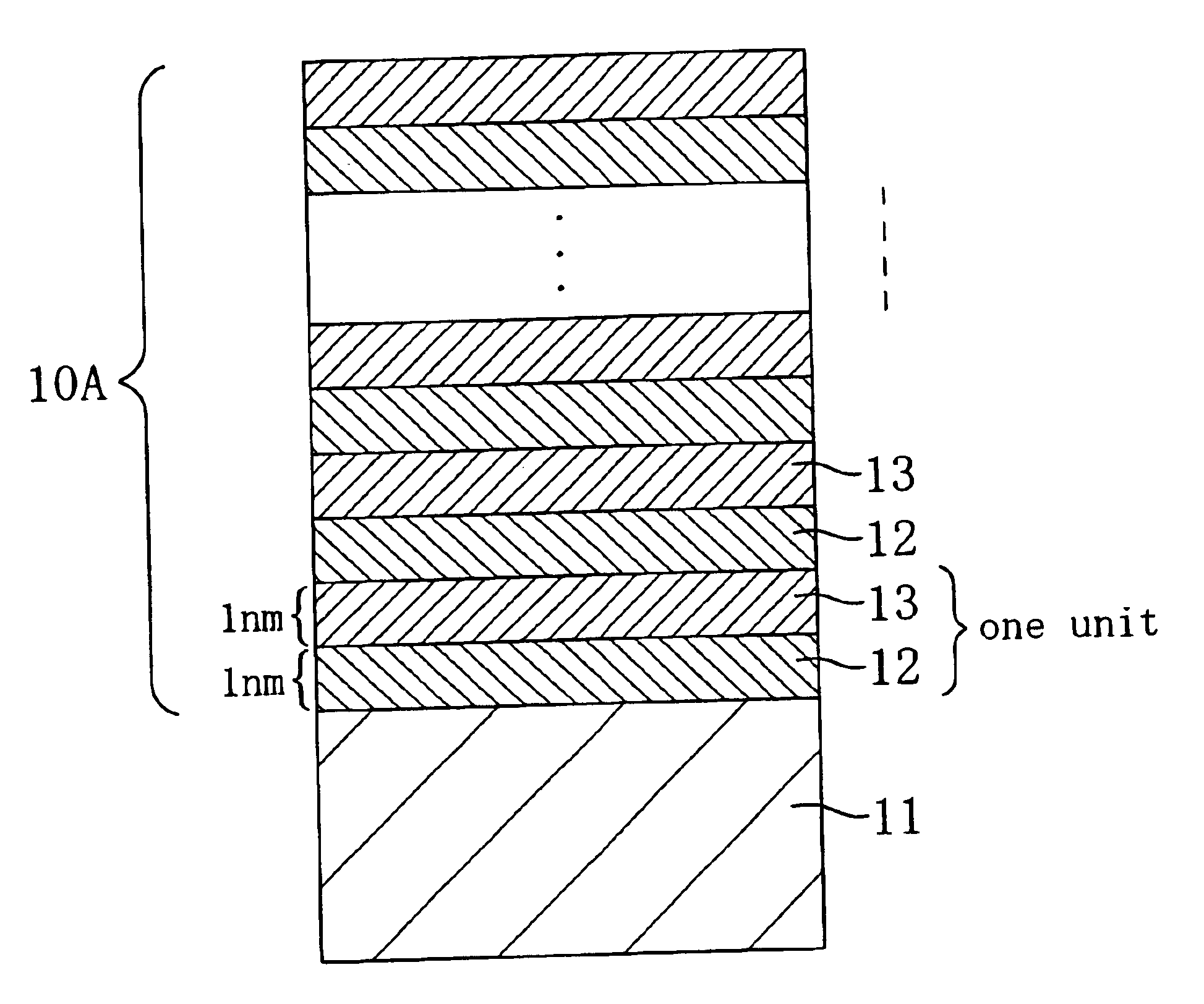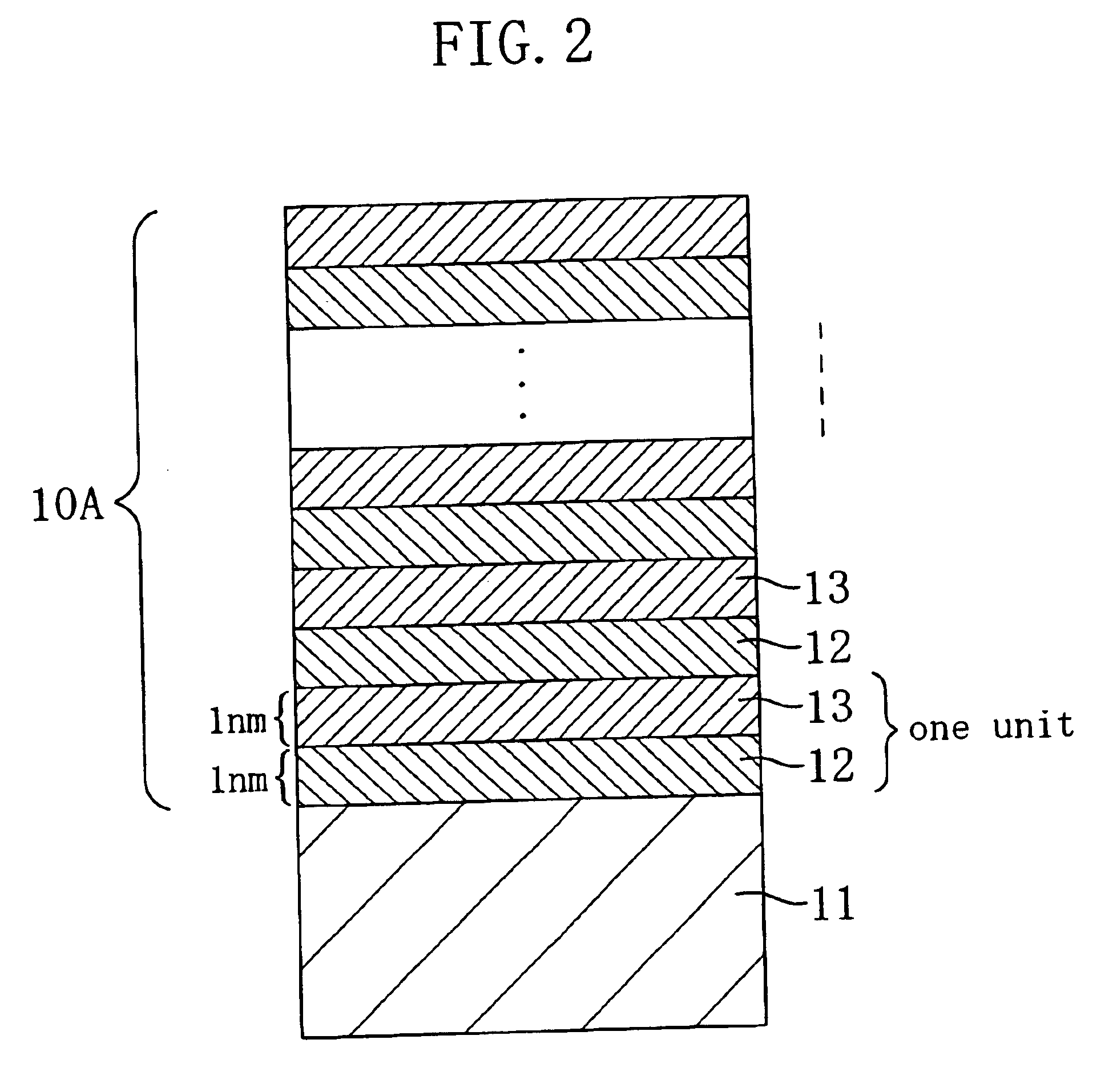Semiconductor crystal film and method for preparation thereof
a technology of semiconductor devices and crystal films, applied in the direction of semiconductor devices, electrical devices, transistors, etc., can solve the problems of difficult dramatic improvement of device performance, limited optimal performance of resultant semiconductor devices, and many technical problems to be overcome. , to achieve the effect of convenient fabrication
- Summary
- Abstract
- Description
- Claims
- Application Information
AI Technical Summary
Benefits of technology
Problems solved by technology
Method used
Image
Examples
second embodiment
o the present invention.
[0047]FIG. 7 is a cross-sectional view schematically showing a structure of an npn heterojunction bipolar transistor (HBT) according to a third embodiment of the present invention.
[0048]FIG. 8 is a cross-sectional view showing a structure of the emitter-base-collector junction shown in FIG. 7 under magnification.
[0049]FIG. 9 is an energy band diagram schematically illustrating a band structure in cross-section through an emitter layer, a base layer and a collector layer when no bias is applied.
[0050]FIG. 10 is a cross-sectional view showing a structure of a heterojunction CMIS device (HCMIS device) utilizing a multi-layer film serving as a SiGeC layer for a p-channel, according to a fourth embodiment of the present invention.
[0051]FIG. 11 is a diagram conceptually showing a band state in a structure where a silicon layer, the multi-layer film and a silicon layer are stacked in the HCMIS device of the fourth embodiment.
BEST MODE FOR CARRYING OUT THE INVENTION
embodiment 1
[0052]FIG. 2 is a cross-sectional view schematically showing a structure of a multi-layer film (a semiconductor crystal film) according to a first embodiment of the present invention. In this embodiment, a Si0.2Ge0.8 layer 12 with a thickness of about 1 nm having a larger lattice constant than Si crystal and a Si0.785Ge0.2C0.015 layer 13 with a thickness of about 1 nm are alternately deposited on a Si substrate 11 a plurality of times (50 cycles in this embodiment), thereby forming a multi-layer film 10A serving as a SiGeC layer with a thickness of about 100 nm. The multi-layer film 10A of this embodiment is considered to have a superlattice structure with little discrete quantum levels. Hereinafter, it will be described how the multi-layer film 10A is formed. FIGS. 3(a) through 3(e) are cross-sectional views showing respective process steps for producing a semiconductor crystal film according to the first embodiment.
[0053]In this embodiment, the Si0.2Ge0.8 layer 12 and the Si0.785G...
embodiment 2
[0071]In the first embodiment, the inventive multi-layer film, which is obtained by alternate epitaxial growths of two crystal films having two mutually different compositions, and the method for producing the film have been described. In this embodiment, another inventive multi-layer film that is obtained by alternate epitaxial growths of three crystal layers having mutually different compositions will be described.
[0072]FIG. 6 is a cross-sectional view schematically showing a structure of a multi-layer film (a semiconductor crystal film) according to a second embodiment of the present invention. In this embodiment, a Si0.2Ge0.8 layer 12 with a thickness of about 1 nm having a larger lattice constant than Si crystal and a Si0.785Ge0.2C0.015 layer 13 with a thickness of about 1 nm, and a Si0.832Ge0.15C0.018 layer 14 with a thickness of about 1 nm are alternately deposited on a Si substrate 11 a plurality of times (33 cycles in this embodiment), thereby forming a multi-layer film 10C...
PUM
 Login to View More
Login to View More Abstract
Description
Claims
Application Information
 Login to View More
Login to View More - R&D
- Intellectual Property
- Life Sciences
- Materials
- Tech Scout
- Unparalleled Data Quality
- Higher Quality Content
- 60% Fewer Hallucinations
Browse by: Latest US Patents, China's latest patents, Technical Efficacy Thesaurus, Application Domain, Technology Topic, Popular Technical Reports.
© 2025 PatSnap. All rights reserved.Legal|Privacy policy|Modern Slavery Act Transparency Statement|Sitemap|About US| Contact US: help@patsnap.com



